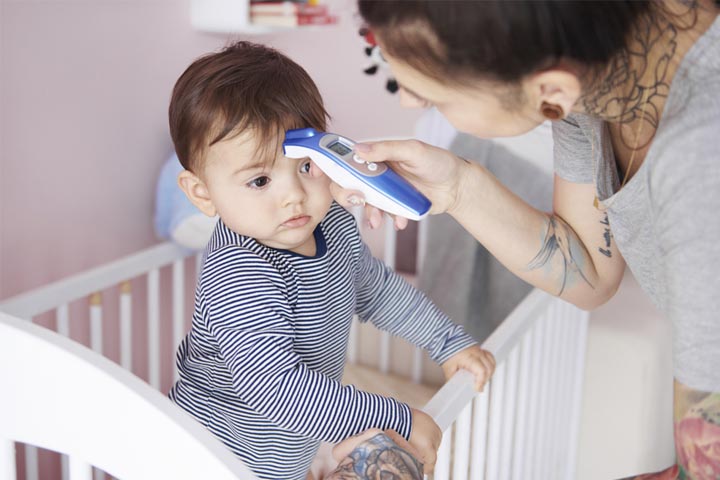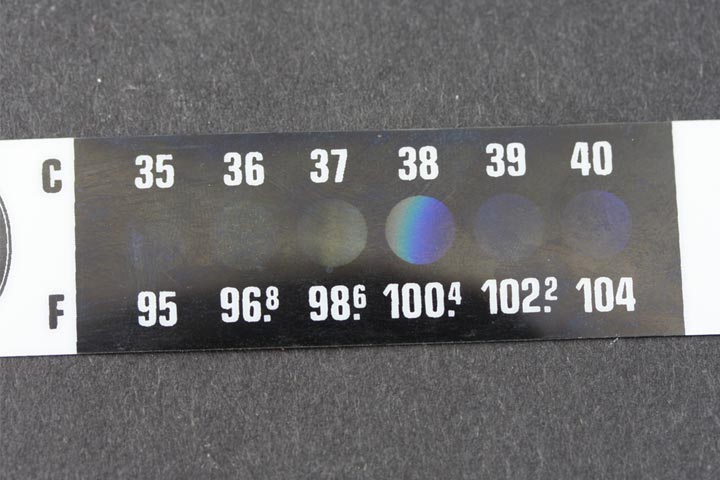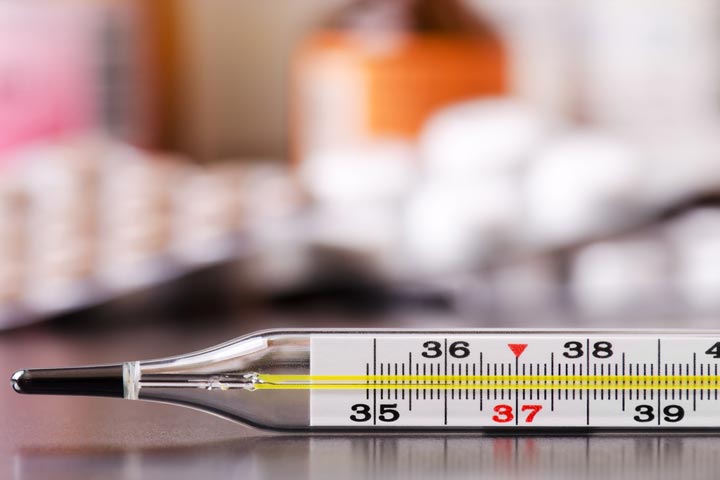
Image: Shutterstock
Every parent wishes to be fully prepared for when your kid gets sick. Be it scraping their knee while playing or coming down with a fever, you always want all the tools ready and at your disposal. One such essential tool that every parent needs to have in their first aid drawer is a thermometer. Apart from the obvious medical attention that needs to be sought, a thermometer helps you be proactive and check your little one’s temperature from your end. This could help the doctor reach a diagnosis sooner without any further delay. Although fevers are said to be a sign that the body is capable of fighting infections, having a high temperature is something that needs to be watched out for. Hence it is always recommended for parents to have a thermometer at hand.
From those with alcohol and water mixtures that were used in antiquity to the ones with mercury to modern digital ones, thermometers have undergone a significant evolution over time. Currently, many different types of thermometers are available in the market that offer various features and are designed with multiple specifications. However, this could make selecting the perfect one a tricky ordeal. Below we have listed down different types of thermometers along with guidelines and features so that you know which one you would want for your child.
1. Digital Thermometer
对于大多数数字温度计的选择people these days as they provide temperature reading in a matter of minutes. Apart from oral reading, you could also use a digital thermometer to record armpit and rectal temperatures. However, please keep in mind that armpit temperatures are not always precise. Also, there is a tendency for the temperature to fluctuate immediately after consuming something hot or cold. It is always best to avoid taking oral temperature checks at least for 20 minutes after food intake as that can affect the readings. Rectal temperature checks may cause puncturing of the bowel walls if not conducted carefully.
2. Tympanic Thermometer (Ear Thermometer)
Tympanic thermometers are used to take temperature readings inside the ear canal. You can use this thermometer for kids who are six months or older. It can provide quite accurate temperature readings. However, getting an accurate reading with a tympanic thermometer might require some practice as it depends on how well you place it in the ear canal. Moreover, the ear wax and/or the curves in the ear canal could sway the accuracy of the readings.
3. Temporal Artery Thermometer
Also known as forehead thermometers, a temporal thermometer can be considered the most comfortable one to use. It uses infrared scanners to check the body’s temperature without requiring direct contact with the body. This makes it the perfect choice for people who find other thermometers invasive and uncomfortable. The thermometer functions by measuring the temperature of the blood in the temporal artery using infrared scanners. In addition to providing the thermometer readings within 3 seconds, the temperature recorded is also quite accurate. A temporal artery thermometer can be used to check the temperature for everyone, including newborn babies and infants.
4. Strip Thermometer
A strip thermometer is one of the most simple ones. The thermometer contains heat-sensitive liquid crystals that change color depending on the temperature it gets exposed to. Easy to use and portable, these can read the temperature within minutes by simply placing it on the forehead. However, it is important to note that strip thermometers do not always provide you with an accurate temperature reading.
5. Mercury Thermometer
Almost everyone among us is aware of mercury thermometers. These are the most traditional thermometers that have been in use for a long time. It consists of a glass tube with mercury filled inside. It also comes with a temperature scale along the length of the tube. The mercury expands and contracts depending on the temperature it gets exposed to, allowing us to read the measurements accordingly. As these are made of glass, they can break easily if not handled with care. Moreover, the toxicity of mercury makes it a less favored option among people, especially parents.
Now that you are familiar with the various types of thermometers available in the market, you may also want to keep in mind the following things while checking your child’s temperature:
- As mentioned earlier, always avoid checking the temperature for around 20 minutes after consuming any food or liquids as it can affect the reading.
- Some children might find thermometers slightly invasive. Hence if your kid is uncomfortable while reading the temperature, it is best to go for a non-invasive one such as a temporal artery thermometer.
- Make sure you inform the doctor of the type of thermometer you have used to record the temperature. This would help them determine the accuracy of the reading and infer an appropriate diagnosis.
- Take the temperature multiple times as it may vary throughout the day. The temperature usually tends to rise later in the evening.
A rise in temperature could put you in a panic mode when you’re a parent. But with the right thermometer at your disposal, you will instantly get a reading of their temperature, which allows you to proceed with the necessary steps and even inform your healthcare provider right away. We hope our article helped you get a better understanding of the different types of thermometers so that you can choose one that is right for your family.


















